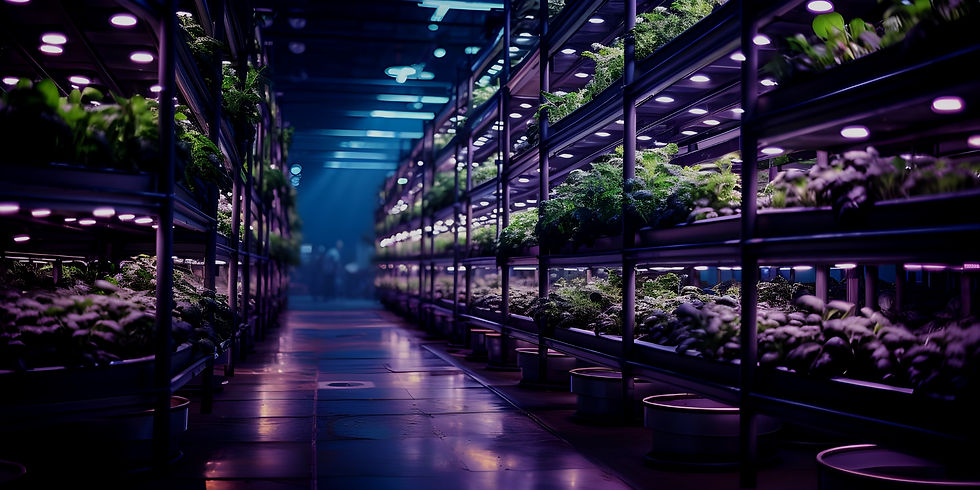
Vertical Farming


What is Vertical Farming?
The Technology
Vertical Farms typically consist of either modules (benches) which can be fixed (Horizontal Fixed) or fully mobile (Horizonal Moving) in three dimensions containing either shallow trays containing pots, module trays or similar, stacked over multiple levels within a building or shipping container, or a combination of suspended channels or other suspended modules, moveable or fixed (Vertical Vertical) lit with LED lighting at each level. Most vertical farms have no windows and some are underground. Generally, the vertical farm building comprises a purpose built clear span structure with insulated internal sub-buildings containing the vertical growing systems.
Vertical Farms must supply everything – water, nutrients, light, CO2 and possibly pollinators and pest control too. Others might be built in massive greenhouses – making the most of the Sun's light and heat, but still controlling other inputs like water.
While sometimes soil is used, increasingly vertical farms use hydroponic or aeroponic systems, where water (for hydroponics) or water vapour (for aeroponics) infused with nutrients is circulated directly around the roots of the plant.
Vertical Farms can considerably reduce both the water and fertilisers needed to grow food. Meanwhile, the closed-off, controlled environment of vertical farms can help with pest and disease mitigation.
The technology can also allow crops to grow in locations where conventional farming is not possible. Astronauts on the International Space Station, for example, are growing their own food in soilless systems under LED lights.
More generally, though, the small amount of land needed for vertical farms means food can be grown near to cities. Shorter supply chains improve both food security and the quality of food. It would also result in reduced food miles than many imported alternatives and help to guarantee the provenance of crops, while also reducing the burden on natural resources like soil, water and the atmosphere. With advanced plant science, crops can be engineered to be healthier and tastier.

Why choose Vertical Farming?
The advantages for Vertical Farm developments are broad:
-
Conservation
-
Preservation of scarce resources
-
Human health benefits
-
Food security mitigation
-
Assist with food poverty actions
-
Ensure adequate food supplies
-
Reduce energy consumption
-
Reduce water consumption
-
Renewable energy utilisation



Why partner with EVOLVE?
EVOLVE's Experience and Portfolio with Vertical Farming
Evolve International has a wealth of experience and expertise to advise on best practice for Vertical Farm developments and operations. In particular:
-
Having undertaken a world-wide scoping study, we are very conversant with technologies, growing operations and current (and future) trends. This provides us with a unique holistic understanding of best practice and appropriate solutions for any given circumstance
-
Appraisals for current needs and requirements
-
Vertical Farm enclosures – new build and retrofitting
-
Technical advice for appropriate technologies and strategies
-
Design and build consultancies
-
Mechanical and Electrical services
-
Waste to energy options
-
Growing strategies and management for optimal yield outcomes
-
Circular Economy strategies
-
Plant health and production – the use of Bio stimulants and Biomimicry
-
Evaluation of risks for whole project life cycles
-
Cost advice for capital and operational considerations
